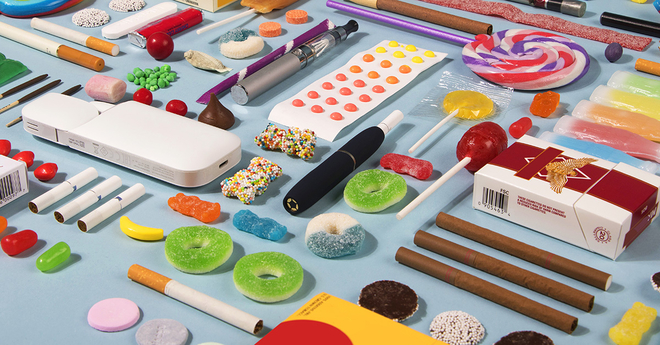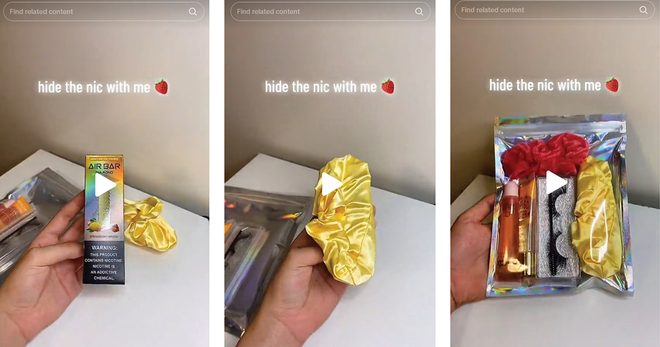JUUL e-cigarette craze highlights why flavored tobacco products are so dangerous
Cigarettes came in flavors like berry, vanilla, margarita and many others until 2009, when federal lawmakers banned them — with the exception of menthol — due to overwhelming evidence that flavored cigarettes entice youth to start smoking.
Fast forward a decade: all those flavors, and more, are available for e-cigarettes, now the most popular tobacco product among youth. E-cigarette use increased 10-fold between 2011 and 2016, when more than 11 percent of youth reported that they currently use the devices.

A new type of e-cigarette is prompting concerns that that number may be rising. JUUL, which comes in flavors such as fruit medley, mango, cool cucumber and creme brulee, captured more than half of the e-cigarette market share in just two years on the market. The sleek device looks like a USB flash drive, and reports from across the country reveal a problem with students using JUUL in school.
While e-cigarettes are less toxic than cigarettes, they can make youth more likely to use regular cigarettes and still contain toxins and the addictive chemical nicotine, which is harmful to adolescent brain development. Flavored e-cigarettes are especially dangerous, not only because they attract youth, but because their young users are likely to be misinformed about the harmfulness of the products.
Flavors are a main reason youth use e-cigarettes.
Almost a third of the middle and high school students who used e-cigarettes in 2016 said the availability of flavors is a main reason they used the products, according to an analysis from the Centers for Disease Control and Prevention and the Food and Drug Administration.
Thirty-one percent of the students cited the availability of flavors, such as mint, candy, fruit or chocolate, as a reason for e-cigarette use. Youth also attributed their e-cigarette use to a friend or family member who used them (39 percent) and the belief that e-cigarettes are less harmful than other forms of tobacco, such as cigarettes (17.1 percent).
Tobacco companies have long marketed flavored products to attract youth and young adults. Research shows that young people are more likely to try flavored e-cigarettes and believe that they are less harmful than tobacco-flavored e-cigarettes.
Many youth think they are only vaping flavor.
Many youth e-cigarette users incorrectly believe they aren’t consuming nicotine when they vape.
The majority of youth e-cigarette users think they vaped only flavoring, not nicotine, the last time they used a product, according to an annual national survey of more than 40,000 students from the University of Michigan 2016 Monitoring the Future study. Ninety-nine percent of e-cigarettes sold in U.S. convenience stores, supermarkets and similar outlets in 2015 contained nicotine, according to a CDC report. Research on JUUL reveals a similar problem. A new Truth Initiative® study published in Tobacco Control found that 63 percent of JUUL users between 15 and 24 years old did not know that the product always contains nicotine.
E-cigarettes are putting an entire generation at risk of nicotine dependence. Truth Initiative and six other public health and medical groups filed a federal lawsuit challenging an FDA decision to delay fully regulating e-cigarettes until 2022 — a full five years past the original deadline, and six years since the FDA finalized a rule to have regulatory authority over all tobacco products.
The groups are also calling on the FDA to take immediate action to address the rising popularity of JUUL among youth. Demands include removing any JUUL flavors, such as the highly popular mango and cool cucumber flavors, which violate FDA rules. Those flavors were introduced after Aug. 8, 2016, without the required FDA marketing order. The law prohibits the introduction of new or changed e-cigarettes after the August 2016 effective date without prior FDA review.



